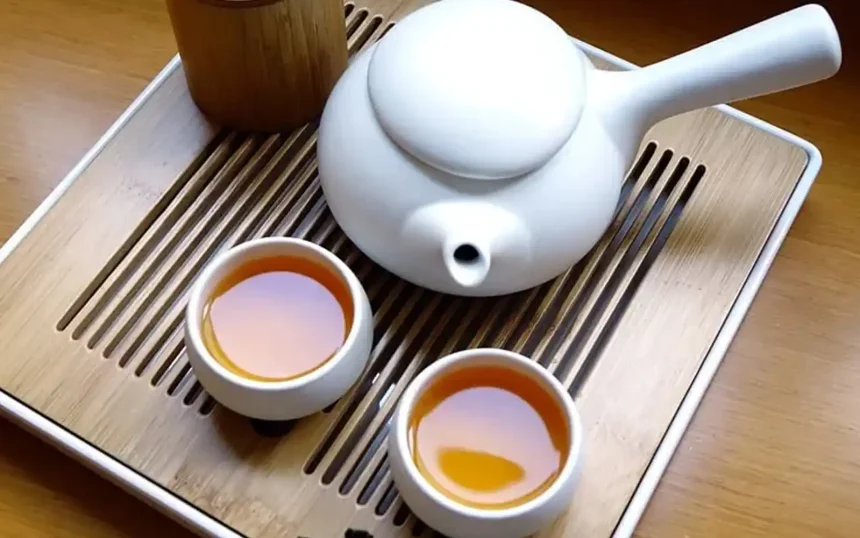Tea is more than just a beverage in Asia—it’s a cultural symbol, a spiritual ritual, and an art form that has shaped traditions for centuries. From Japan’s meditative tea ceremonies to China’s reverence for ancient tea preparation methods, Asia’s tea culture offers a rich tapestry of history, flavors, and practices. Let’s explore the timeless tea traditions across the continent and how they continue to captivate the world.
The Origins of Tea: A Legacy Rooted in China
China is widely considered the birthplace of tea, with a history dating back over 4,000 years. According to legend, Emperor Shen Nong discovered tea when leaves from a Camellia sinensis plant accidentally fell into his boiling water. This humble beginning blossomed into an intricate tea culture that spread across Asia and beyond.
Key Chinese Tea Traditions
- Gongfu Tea Ceremony: A meticulous preparation method that involves small teapots and precise techniques to bring out the tea’s full flavor and aroma.
- Variety of Teas: China offers an unparalleled variety of teas, including green tea (Longjing), black tea (Keemun), and the prized oolong and pu-erh teas.
Japan: The Spiritual Essence of Tea
Japan’s tea culture is deeply rooted in Zen Buddhism, emphasizing simplicity, mindfulness, and respect. The Japanese tea ceremony, or chanoyu, is an artistic and spiritual practice that celebrates harmony, purity, and tranquility.
Elements of Japanese Tea Culture
- Matcha: Powdered green tea used in ceremonies, known for its vibrant color and earthy flavor.
- Tea Houses: Traditional settings where ceremonies take place, designed to evoke a sense of peace and detachment from the outside world.
- Seasonal Aesthetics: Japanese tea ceremonies often incorporate seasonal elements, from floral arrangements to ceramic tea bowls, reflecting the changing nature of life.
India: The Birthplace of Chai
India’s tea culture revolves around chai, a spiced milk tea that has become a global favorite. Introduced by the British during the colonial era, tea cultivation in India thrived in regions like Assam and Darjeeling, producing some of the world’s finest teas.
Unique Aspects of Indian Tea
- Masala Chai: A blend of black tea, milk, and spices like cardamom, cinnamon, and ginger, brewed to create a comforting and aromatic drink.
- Tea Plantations: Darjeeling and Assam teas are internationally celebrated for their unique flavors and high-quality production.
Korea: Tea as a Path to Harmony
In Korea, tea culture reflects the principles of balance and harmony, influenced by Buddhist and Confucian traditions. Korean teas, often made from leaves, flowers, and grains, are valued for their health benefits and subtle flavors.
Key Practices in Korean Tea Culture
- Darye (Tea Etiquette): A simple, informal tea ceremony focused on mindfulness and respect for nature.
- Herbal Infusions: Teas like barley tea (boricha) and omija tea (made from five-flavor berries) highlight Korea’s unique approach to tea preparation.
Thailand: A Modern Take on Tea
Thailand’s tea culture blends tradition with innovation. Known for its distinctive Thai iced tea, the country has adapted tea to suit its tropical climate and vibrant flavors.
Characteristics of Thai Tea Culture
- Thai Iced Tea: A sweet and creamy drink made with black tea, sugar, and condensed milk, often served over ice.
- Herbal Teas: Infusions made from lemongrass, pandan leaves, and butterfly pea flowers are popular for their refreshing taste and health benefits.
Vietnam: A Taste of Simplicity
Tea in Vietnam is an everyday ritual, enjoyed for its simplicity and connection to nature. Vietnamese tea culture emphasizes fresh, fragrant brews made from locally grown leaves.
Highlights of Vietnamese Tea
- Lotus Tea: Green tea leaves infused with the scent of lotus flowers, a delicacy symbolizing purity and peace.
- Social Tea Drinking: Tea is often served during gatherings, fostering a sense of community and hospitality.
Modern Tea Trends: A Global Influence
While steeped in tradition, Asia’s tea culture continues to evolve and influence global trends. From bubble tea originating in Taiwan to artisanal matcha lattes in cafes worldwide, the versatility of tea has made it a modern-day phenomenon.
Bubble Tea: Taiwan’s Global Hit
Bubble tea, invented in Taiwan in the 1980s, has become a global sensation. This playful drink combines tea with tapioca pearls and a variety of flavors, attracting tea lovers of all ages.
Specialty Teas and Wellness
The rising interest in health and wellness has boosted the popularity of specialty teas like matcha, turmeric tea, and herbal blends, showcasing the adaptability of traditional tea practices to modern lifestyles.
Preserving the Art of Tea
As globalization transforms how tea is consumed, efforts are underway to preserve Asia’s traditional tea practices. Cultural initiatives, tea tourism, and educational programs ensure that the art of tea remains a cherished heritage.
Tea Tourism
Countries like China, Japan, and India offer immersive tea experiences, from visiting ancient tea plantations to participating in authentic tea ceremonies.
Global Tea Communities
Tea enthusiasts worldwide are forming communities to learn, share, and celebrate the diverse traditions of tea, fostering cross-cultural appreciation.
Conclusion: A Timeless Ritual
The art of tea in Asia is more than a beverage—it is a bridge between history, culture, and modern life. Whether enjoyed in the tranquility of a Japanese tea house or in a bustling Indian street market, tea continues to connect people, offering moments of peace, flavor, and tradition in an ever-changing world.











